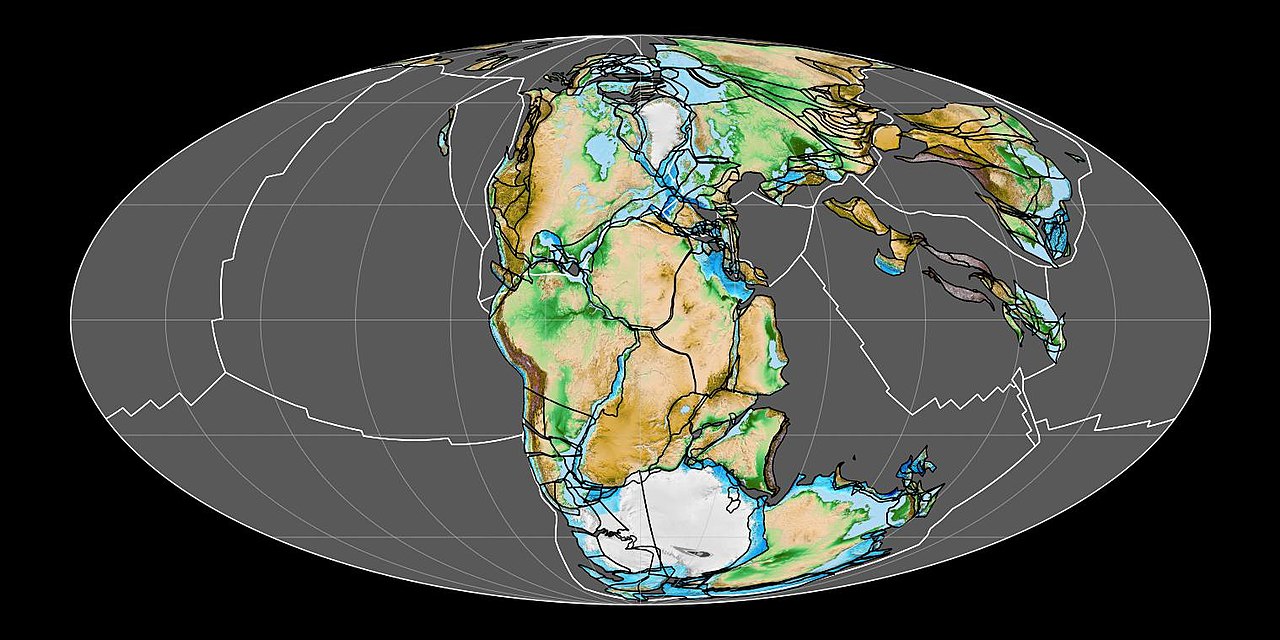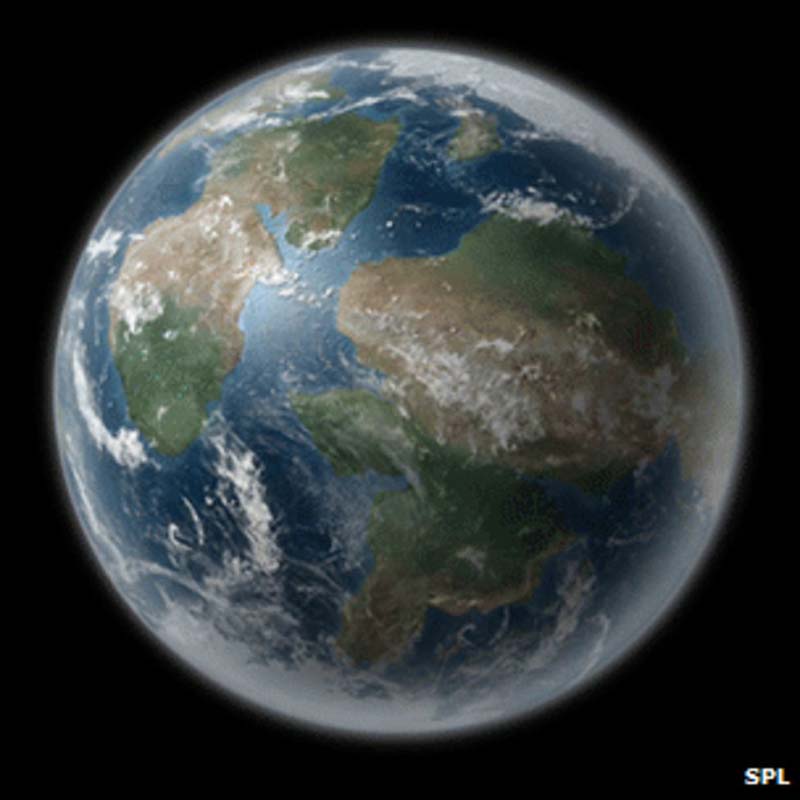

In geology, Rodinia - Russian for "to give birth" - is the name of a supercontinent, a continent which contained most or all of Earth's landmass. According to plate tectonic reconstructions, Rodinia existed between 1.1 billion and 750 million years ago, in the Neoproterozoic era. It formed at ~1.0 Ga by accretion and collision of fragments produced by breakup of the older supercontinent, Columbia, which was assembled by global-scale 2.0-1.8 Ga collisional events.
Rodinia has entered popular consciousness as one of the two great supercontinents of earth history, the other being Pangaea a supercontinent that existed during the late Paleozoic and early Mesozoic eras, forming about 300 million years ago that began to rift around 200 million years ago, before the component continents were separated into their current configurations.


Mauritia was a Precambrian microcontinent that was situated between India and Madagascar until their separation about 70 million years ago. Being initially attached to the Indian continent, Mauritia separated from it about 60 million years ago and further fragmented into a ribbon-like structure as the mid-ocean ridge jumped several times. The jumps of the mid-ocean ridge are thought to have been caused of its interaction with the Reunion hotspot as it passed under the West margin of the Indian continent and then under Mauritia. As of today, the fragments of Mauritia include the Laccadives-Maldives-Chagos Ridge, Nazareth Bank, the Saya de Malha Bank, and Hawkins Bank, as well as the islands of Reunion and Mauritius, where the continual crust is buried under basaltic lavas of the Reunion hotspot.
Evidence for Mauritia's existence consists of detrital zircon found in rock (6-million-year-old trachyte) on Mauritius. Analyses of the zircon crystals produced dates between 660 and 1,970 million years and are considerably older than the 8.9-million-year-old basalt that constitutes the oldest formations on the island. The zircons are interpreted to have been brought up from buried continental crust as fragments entrained as xenocrysts within the basalt. Interpretation of a linear northwest-southeast gravity anomaly indicates the microcontinent may extend 1,500 kilometres (930 mi) from Seychelles to Mauritius roughly parallel to the Indian Ocean oceanic ridge

Fragments of ancient continent buried under Indian Ocean BBC - February 25, 2013
Fragments of an ancient continent are buried beneath the floor of the Indian Ocean, a study suggests. Researchers have found evidence for a landmass that would have existed between 2,000 and 85 million years ago. The strip of land, which scientists have called Mauritia, eventually fragmented and vanished beneath the waves as the modern world started to take shape. Evidence constituted of zircon found on Mauritius beaches; the zircon pieces are considerably older than the basalt that constitutes the oldest formations on the island at 8.9 million years.
Until about 750 million years ago, the Earth's landmass was gathered into a vast single continent called Rodinia. And although they are now separated by thousands of kilometres of ocean, India was once located next to Madagascar. Now researchers believe they have found evidence of a sliver of continent - known as a microcontinent - that was once tucked between the two.
The team came to this conclusion after studying grains of sand from the beaches of Mauritius. While the grains dated back to a volcanic eruption that happened about nine million years ago, they contained minerals that were much older. Professor Trond Torsvik, from the University of Oslo, Norway, said: "We found zircons that we extracted from the beach sands, and these are something you typically find in a continental crust. They are very old in age." The zircon dated to between 1,970 and 600 million years ago, and the team concluded that they were remnants of ancient land that had been dragged up to the surface of the island during a volcanic eruption. It would have spanned millions years of history, from the Precambrian Era when land was barren and devoid of life to the age when dinosaurs roamed the Earth.
But about 85m years ago, as India started to drift away from Madagascar towards its current location, the microcontinent would have broken up, eventually disappearing beneath the waves. However, a small part could have survived. "At the moment the Seychelles is a piece of granite, or continental crust, which is sitting practically in the middle of the Indian Ocean," explained Prof Torsvik. "But once upon a time, it was sitting north of Madagascar. And what we are saying is that maybe this was much bigger, and there are many of these continental fragments that are spread around in the ocean." Further research is needed to fully investigate what remains of this lost region.
Ancient 'Micro-Continent' Found Under Indian Ocean Live Science - February 25, 2013
The remains of a micro-continent scientist call Mauritia might be preserved under huge amounts of ancient lava beneath the Indian Ocean, a new analysis of island sands in the area suggests. These findings hint that such micro-continents may have occurred more frequently than previously thought. Researchers analyzed sands from the isle of Mauritius in the western Indian Ocean. Mauritius is part of a volcanic chain that, strangely, exists far from the edges of its tectonic plate. In contrast, most volcanoes are found at the borders of the tectonic plates that make up the surface of the Earth

CONTINENTAL DRIFT